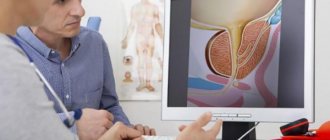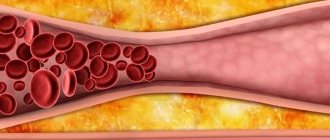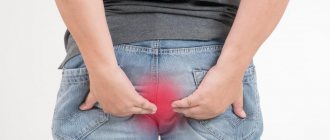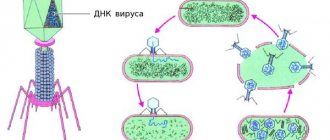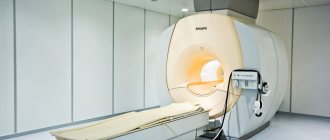Understanding the Genitourinary System
The genitourinary system begins with the kidneys, located at the lumbar level.
Each kidney removes toxins and excess minerals and fluid from the blood. The resulting urine flows through long tubes, the ureters, into the bladder and is eventually discharged through another tube, the urethra. Certain unpleasant symptoms when urinating are quite common, especially in women: a painful burning sensation when urinating, an urgent need to urinate as if you can't hold it in (urinary urgency), and frequent urination (urinary frequency).
General information about male disease
Cystitis in men is an infectious disease. The prevalence of this disease in men is much less than in women. This is explained by the fact that it is more difficult for bacteria that cause the disease to enter the male body. The male urethra is longer, so the infection does not reach the internal organs of men as often as in women.
Cystitis is a disease that affects the genitourinary system, regardless of the person’s gender. The course and symptoms of the disease differ somewhat among representatives of different sexes, although there are common signs. Cystitis in men is a process of inflammation of the urinary system. With this disease, the mucous tissue of the bladder is affected, as a result of which the man experiences discomfort and cannot live a full life.
Manifestations of abnormal bladder activity: painful and frequent urination, the appearance of mucus and blood in the urine, repeated urges to visit the toilet at night. The patient may not immediately see a doctor; this is dangerous because of its consequences. Cystitis can become chronic and lead to other complications. In order not to progress the disease, try to contact experienced specialists at the Global Clinic Center in a timely manner.
Features of pain when urinating in men
When contacting doctors, it is important to be as honest as possible. This will help to collect a detailed and complete history. The urologist will identify the exact location of the pain, its nature: sharp, increasing, aching. Also of great importance is the moment at which the pain appears: after urination, at the initial stage or in the middle of the process of emptying the bladder.
It is important to observe your own body and note other sensations against which pain appears:
- non-physiological discharge (white plaque on the head of the penis, purulent foam, etc.);
- problems with erection or after sexual intercourse;
- cloudy urine;
- itching, etc.
Sometimes you may need to consult other specialists when creating a treatment plan. At our clinic you can make an appointment for:
- appointment with a venereologist;
- appointment with an endocrinologist.
Classification of cystitis
There are several signs that form the basis for the classification of the disease.
By methods of manifestation
According to the methods of manifestation, there are two types of cystitis:
- Spicy
- Chronic
Acute cystitis in men can occur:
- first;
- no more than one case per year;
- with a frequency of 2 or more times every 365 days.
For the occurrence of acute cystitis, there are unfavorable factors in the form of uncontrolled use of certain medications and thermochemical effects on a man. An infection that enters the body of men can also cause certain symptoms characteristic of acute stage cystitis.
The chronic form of the disease can be divided into the following subtypes:
- Latent (symptoms of cystitis in men in this case are smoothed out). The frequency of occurrence of the disease is more than two cases per year, the disease is stable or with rare periods of exacerbations.
- Persistent. The process of inflammation and development of cystitis is diagnosed twice a year or more often.
- Interstitial. This is the most severe form of the disease. Cystitis progresses and can lead to serious complications.
According to the etiology of occurrence
Based on this characteristic, doctors distinguish such forms of cystitis in men as primary and secondary. Primary cystitis is in no way associated with other pathologies of men. This is an independent disease. The secondary form may be the result of problems in the genitourinary system and other organs of the patient. Men with prostate adenoma, diseases of the spinal column, abnormal development of the bladder, or ingestion of foreign fragments should be prepared for this kind of disease.
By localization of inflammation
Cervical, diffuse, trigonitis, focal form of cystitis - this diagnosis is made depending on the location of the source of the disease. Each type of disease is characterized by its own symptoms: with cervical cystitis, urine cannot be retained, the patient often “runs” to the toilet; the diffuse form is characterized by the extensive spread of inflammation; With trigonitis, clots of blood and pus appear in the urine.
Why does my bladder hurt?
Cystitis
Cystitis is a large and diverse group of pathologies. More often it is infectious in nature, provoked by opportunistic bacteria. Less commonly, the disease is caused by fungi (candidal cystitis) and STI pathogens: chlamydia, trichomoniasis, mycoplasmosis, etc. Sometimes inflammation develops without the participation of microbes and becomes a consequence of chemical, mechanical or radiation irritation of the mucous membrane. The following types of cystitis are distinguished:
- Spicy.
Pain in the bladder radiates to the anus and perineum, combined with frequent imperative urges, the release of small portions of cloudy urine, and pain at the end of urination. When inflammation spreads to the neck of the organ, the pain becomes severe and constant, and urinary retention or incontinence is possible. - Postcoital.
A variant of acute cystitis with short-term episodes potentiated by sexual contact. It is observed in girls who have just begun to be sexually active, and in women after complicated childbirth. Symptoms appear within the first day after intercourse. Pain above the pubis, a feeling of fullness, false urges, discomfort, pain and burning when urinating are noted. - Chronic.
During exacerbations, the same symptoms are found as in acute cystitis. The pain is constant or appears during urination (sometimes only at the end or at the beginning). The disturbances persist for several weeks, then disappear, and after a while they appear again. The diagnosis is made with 2 exacerbations within six months or 3 within a year. - Interstitial.
A non-infectious variant of chronic progressive inflammation. In the initial stages there is no pain. Subsequently, increasing pain is noted in the projection of the detrusor with irradiation to the perineum, vagina, and sacrum. When the bladder is full, the pain intensifies, but after passing urine it weakens or disappears. Pain, dysuria, nocturia, and frequent urges are observed. - Trigonite.
Metaplasia of the cells of the bottom of the bladder is often asymptomatic; when inflammation occurs, periodic dull, aching, nagging pain, urgency, a feeling of incomplete emptying, burning, and cramping during urination are detected.
Clinical manifestations of cystitis vary somewhat depending on the age and gender characteristics of patients, the presence of certain physiological conditions accompanied by changes in endocrine background. The following flow options are possible:
- Among women.
Due to the short urethra and the proximity of the genital organs, pathology is diagnosed more often in women of childbearing age than in men. As a rule, it is provoked by hypothermia, exacerbations occur mainly in the cold season. - In children.
Occurs against the background of insufficient hygiene, hypothermia, and disturbances in the structure of the urinary tract. Characterized by rapid development and rapid course with pain in the bladder, radiating to the perineum, urination after 10-20 minutes, cramps, false urges, and terminal hematuria. - In pregnant women.
It is first discovered or worsens during gestation. Accompanied by pain of varying intensity when passing urine, pain above the pubis, aggravated by palpation, and cloudy urine. With postpartum cystitis, urinary retention is often observed. - During menopause.
It is formed against the background of hypoestrogenism, mucosal atrophy and deterioration of metabolic processes. It manifests itself as constant aching pain in the lower abdomen, increased urge, pain and severe pain at the end of urination. Typically relapsing. - In men.
Patients over 40 years of age with bladder outlet obstruction most often suffer. The pain spreads to the groin, penis and scrotum. Along with other symptoms of cystitis, pain, burning and stinging in the urethra at the beginning and end of urination are detected. - Prostatocystitis.
It is determined mainly in men of the older age group who have undergone surgery on the prostate and urinary tract. It has a wide variety of symptoms. Patients are concerned about pain in the external genitalia, perineum, and bladder. Dysuria, sluggishness of the stream, and sometimes incontinence during urgent urges are noted.
A special type of inflammation is radiation cystitis, which develops during radiation therapy for malignant pelvic tumors. The acute version occurs immediately or within a few weeks after treatment. Manifests itself with typical symptoms. The chronic form of the pathology is characterized by intense pain in the bladder area, constant dysuria, urge after 10-15 minutes, pain, persistent incontinence, and recurrent gross hematuria.
Paracystitis
Inflammation of the peri-vesical tissue develops against the background of iatrogenic injuries, operations, and diseases of the pelvic organs. Patients with paracystitis complain of unbearable, extremely sharp pain above the womb. General hyperthermia, intoxication syndrome, and painful urination are noted. Sometimes there is swelling above the pubis. When the abscess ruptures, urine with pus flows into the bladder, and the condition improves.
Bladder pain
Urolithiasis disease
Pain in cystolithiasis is caused by traumatization of the detrusor walls by stones. Painful sensations sharply intensify, become acute, extremely intense when urinating, changing posture, or moving. Irradiation to the thighs, external genitalia, and perineum is possible. When stones migrate, pain and pain are complemented by delay or interruption of the urine stream. If a stone becomes lodged in the cervix, incontinence may occur.
Acute urinary retention
Occurs against the background of urolithiasis, urethral strictures, and prostate diseases. There is a pressing pain and distension in the bladder, a strong urge with the impossibility of urinating. There is a sharp increase in pain when pressing in the suprapubic area. Patients with AUR are restless and in a characteristic half-bent position.
Cysts and tumors
Discomfort, dull aching pain in the lower abdomen and navel area appear with large urachal cysts, accompanied by a feeling of incomplete emptying and frequent urination. When a cyst ruptures into the bladder, signs of acute cystitis are detected. Benign detrusor tumors are asymptomatic for a long time or are accompanied by dysuria and hematuria. When inflammation occurs, the clinical picture is complemented by pain in the perineum and above the pubis, which intensifies at the final stage of urination.
With leukoplakia, constant aching pain is combined with pain, difficulty urinating, urgency, and incontinence. When the cervix is involved, the pain becomes more pronounced and intense. In 10-20% of cases, cancer is detected in patients with leukoplakia. In bladder carcinoma, the onset of pain is preceded by hematuria. The pain at first only bothers you when the detrusor is full, then it becomes constant, acute, unbearable, radiating to the sacrum and groin.
Injuries and foreign bodies
With intraperitoneal ruptures, acute intense pain is detected in the suprapubic area, which then spreads to the entire abdominal cavity, supplemented by muscle tension, retention of stool and gases, nausea and vomiting. With retroperitoneal injuries, a painful swelling above the pubis is detected in combination with false urges. Victims with bladder injuries often develop traumatic shock.
Foreign bodies of the detrusor are asymptomatic or accompanied by cramps and pain in the lower abdomen. The pain intensifies with movement. Hematuria, ischuria, or frequent painful urination are observed. If infected, pyuria is possible.
Other reasons
In some cases, pain in the bladder is observed with the following urological and gynecological pathologies:
- cystocele;
- malakoplakia;
- shriveled bladder.
Sometimes cramps in combination with painful sensations are found in mental disorders: hysteria, neurasthenia, psychotic states.
Causes of cystitis in men
Cystitis is most often provoked by various infections that penetrate the male body. The bladder, which contains intestinal, Pseudomonas aeruginosa, tuberculosis bacilli, staphylococci, gonococci, begins to malfunction, and inflammation of various etiologies and localization occurs. There are many unfavorable factors for the appearance of cystitis in men:
- weak immune system;
- powerful radiation exposure of men;
- allergy;
- prolonged and severe hypothermia;
- presence of infections;
- injuries in the bladder area.
Frequent stress, excessive passion for work, smoking, alcohol, and a disordered sex life have a detrimental effect on a man. Men who have undergone unprofessional surgical intervention in the area of the urethra and bladder should be warned about possible negative consequences. Trusting the professional doctors from the Global Clinic Center is the first step towards a successful solution to the problem.
Diagnosis of pain in the bladder area in men
If a patient presents with pain, the urologist needs to make an accurate diagnosis. For this purpose, the following list of studies is prescribed:
- Interview and examination of the patient
. The urologist must carefully examine the patient’s medical history, clarify symptoms and complaints. It is also necessary to examine the external genitalia. - Keeping a urine diary.
For 2-5 days, the patient should write down everything about his urination. The diary indicates the time, volume of urine and sensations during the act of bowel movement (pain, burning, stinging). The patient should also record data on all liquids drunk per day. - Analysis of urine.
A general urine test is carried out to identify the inflammatory process and a general assessment of the functioning of the urinary system. It is also necessary to carry out bacteriological culture of urine on a nutrient medium. This allows you to determine the growth of colonies of pathogenic microorganisms and create an antibiogram. - Test with potassium solution .
During this study, clean water is injected into the bladder cavity through a catheter, and after some time a potassium solution is injected. Next, the patient must fill out a special test protocol. It gives a subjective assessment of pain from 1 to 5 points. A healthy person does not experience pain when both fluids are administered. If the potassium solution causes severe pain, the patient is diagnosed with interstitial cystitis. - Cystoscopy.
This is an informative endoscopic examination of the bladder, which is carried out with a special device - a cystoscope. This endoscope looks like a thin tube that is inserted into the body through the urethra. Since the urethral canal in men is very thin and long, the procedure must be performed under anesthesia. During cystoscopy, the urologist can examine the inside of the bladder in a greatly enlarged format. The study reveals most of the possible pathologies of the organ. - Biopsy.
This is the collection of a small area of tissue for microscopic analysis. Tissue is taken for biopsy during cystoscopy. This study allows you to confirm or exclude cancer.
Only after making an accurate diagnosis can treatment begin.
Symptoms of male cystitis
The most common symptoms of cystitis in men are:
- Frequent (often with difficulty and pain) urination.
- Change in urine odor.
- Presence of pus and bloody discharge in the urine.
- Burning and itching when urinating.
Specific symptoms may be accompanied by general negative signs: weakness, decreased ability to perform usual work, painful manifestations in the groin, scrotum, bladder, increased body temperature. A man with cystitis becomes nervous, irritable, vulnerable to other diseases - the presence of these symptoms varies from person to person. The intensity of the signs of the disease increases along with the neglect and progression of cystitis.
Where to go if you have pain when urinating?
You should not strive to endure discomfort or hope for miraculous self-healing. Carelessness in matters of one's own health can provoke chronic inflammation, as well as the occurrence of other complications. According to many patients, early diagnosis is the key to a quick return to a full and healthy life.
If men experience pain when urinating, we recommend making an appointment with a urologist. To clarify its price or get advice on other issues, contact us in a convenient way.
Diagnostics
The success of treatment largely depends on timely diagnosis. Modern methods of diagnosis are used by medical specialists from the Global Clinic Center. The doctor who conducts the appointment carefully listens to the patient’s complaints, taking an anamnesis of the disease. After this, the patient will be asked to do a urine test. The Nechiporenko method and bacterial culture are effective diagnostic methods.
The speed and smoothness of the process of urine passage through the urethra and other organs of the excretory system can be determined by the uroflowmetry method. The use of an endoscope in cytoscopy makes it possible to examine the bladder from the inside. This method gives an accurate picture of possible organ pathologies.
The male type of cystitis can be diagnosed using an ultrasound of the prostate to identify the amount of residual urine. The use of ultrasound to examine the bladder is difficult due to the overcrowding of this organ. A blood test for general analysis is also prescribed to patients to identify the causes of the disease.
Reasons for the development of cystitis
As a rule, cystitis is provoked by infection (most often E. coli, staphylococci, streptococci, etc.). Microorganisms begin to multiply in the mucous membrane and destroy it.
Cystitis can also be caused by sexually transmitted diseases (ureaplasmosis, mycoplasmosis, etc.).
Cystitis can also occur as a consequence of other urological diseases, such as inflammation of the kidneys, inflammation of the ureters and disorders of the prostate gland.
Other factors that contribute to the development of cystitis may include:
- general hypothermia of the body, especially the legs;
- poor personal hygiene;
- hormonal changes and hormonal imbalance (in women - pregnancy, menopause);
- stones in the bladder (urolithiasis);
- narrowing of the urethra;
- trauma to the urethra;
- pelvic organ prolapse;
- diabetes;
- weak immunity;
- prostate disease, leading to incomplete emptying of the bladder;
- irritating scented soaps, shampoos and bubble baths;
- stress.
Treatment
Treatment comes down to a whole range of effective measures that must be followed.
Medicines
The main drugs that fight back cystitis are antibiotics. The patient may be admitted to a hospital or take these medications on an outpatient basis. It all depends on how far the disease has progressed. Specific antibiotic preparations are determined by the doctor after determining the cause and nature of the disease and studying laboratory tests. Qualified specialists of the Global Clinic Center will take all measures to ensure that the treatment is as effective as possible. Doctors will prescribe medications against infections if this is the cause of the disease. For severe pain, effective painkillers will be recommended.
Phytotherapy
Decoctions of herbs that have a diuretic and anti-inflammatory effect will complement drug treatment. For cystitis, brew bearberry, lingonberry leaf, and horsetail. They will help to quickly relieve inflammation, “expel” residual urine from the bladder, and normalize the process of urination. The use of phytotherapeutic drugs should be discussed with your doctor and used in combination with medications.
Physiotherapy
This technique is not suitable for patients with exacerbation of the disease. The disease in a chronic form or after its acute period has passed can be treated with additional physiotherapeutic methods:
- electrophoresis;
- use of medicinal mud;
- treatment with magnets;
- UHF, etc.
Treatment Options
The urologist prescribes a therapy program depending on the identified diagnosis. First of all, the doctor eliminates the causes of unpleasant symptoms: administers antibiotic therapy, prescribes antiviral or hormonal drugs, for example, to reduce the growth of a tumor. Sometimes surgery is required.
To relieve symptoms, doctors use:
- Anti-inflammatory: steroidal or non-steroidal;
- Painkillers;
- Antispasmodics;
- Diuretics;
- Anticoagulants;
- Antihistamines.
Antihistamines help reduce swelling and restore urination. Anticoagulants improve blood circulation, thereby normalizing metabolism.
Typically, drug therapy involves taking drugs orally. Sometimes intramuscular or intravenous infusions are required. In difficult situations, when the inflammatory reaction is strong, doctors choose instillations - drugs are injected directly into the bladder.
Neurostimulation and other physiotherapeutic procedures
Neurostimulation - exposure to nerve endings with electrodes allows you to normalize the functioning of the bladder: false urges to urinate are reduced, urine is released in a normal volume and with normal frequency.
Magnetic therapy, UHF, applications of herbal remedies, mud baths help restore the functioning of the entire body and help normalize the level of immunity.
Diagnosis and treatment of cystitis
The key to quick and effective treatment of cystitis is correct diagnosis and timely administration of appropriate therapy. Our center carries out all the necessary examinations for this disease: urological and gynecological examinations, ultrasound of the genitourinary tract, urine and blood tests and cystoscopy. Experienced urologists will help you get rid of the disease as soon as possible. The main thing is to contact a specialist at the first signs of the disease, so that cystitis does not become your “eternal companion.”
Reading reviews on the Internet about the treatment of cystitis, you may come across methods of treating cystitis using folk remedies or, for example, the widely advertised drug Monural. But self-medication in this matter is absolutely unacceptable! Only a urologist will be able to select the correct treatment regimen for you, including effective drugs for the treatment of cystitis, and will also prescribe the necessary follow-up examination after cystitis to prevent relapse.
We know how to treat cystitis! The method of treatment of cystitis in the multidisciplinary clinic "MedicCity" is selected individually by a urologist, taking into account the characteristics of each patient and examination data. Treatment of cystitis should be aimed both at suppressing the source of infection, and at increasing the body’s immunity and restoring normal vaginal microflora in women with cystitis.
